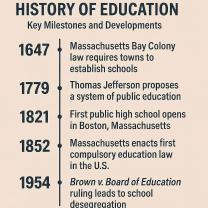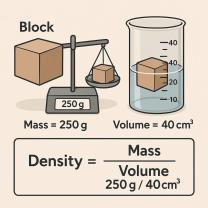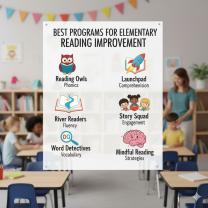Where can I find scholarships for college?
Where to Find Scholarships for College: Top Resources
The dream of a college education often comes with a significant financial reality check.
Faced with these staggering figures, many turn to loans, contributing to the nation’s $1.814 trillion in student loan debt.
What Are the Best Websites to Find College Scholarships?
The scholarship search can feel overwhelming, but a variety of high-quality online tools have simplified the process by acting as central databases.
Top Online Resources
These platforms are essential starting points, acting like search engines for financial aid:
Fastweb: One of the oldest and largest databases, offering a personalized list of over 1.5 million scholarships tailored to your profile.
Scholarships.com: Features a wide range of scholarships, including those for different majors, backgrounds, and talents.
Cappex: Matches you to scholarships and provides a comparison tool for colleges you are interested in.
College Board’s BigFuture: A reliable, free tool from the makers of the SAT, offering a comprehensive scholarship search feature.
Niche: Known for its easy-to-use platform and its selection of "no-essay" and unique scholarships.
Government and Official Databases
Don't overlook official, government-backed sources that often list the most substantial federal and state aid:
U.S. Department of Labor’s Scholarship Finder: This is a government-run database that can be a valuable, unbiased source for federal and state programs.
The Free Application for Federal Student Aid (FAFSA): While primarily for federal grants, loans, and work-study, completing the FAFSA is the prerequisite for many need-based scholarships, including the substantial Pell Grant, which supports over 7 million students annually.
Local and Institutional Resources
Often, the best scholarship odds are found closest to home, where the applicant pool is smaller:
Your High School/College Financial Aid Office: School counselors and college financial aid officers are often aware of scholarships exclusive to their students, local community, or alumni. In fact, an estimated 65% of students who secure scholarships obtained them directly from their college or university.
Community Organizations and Foundations: Local non-profits, Rotary clubs, Kiwanis chapters, churches, and women’s clubs often offer awards specifically for students in their county or town. These can be less competitive than national awards.
State Programs: Many state governments offer extensive grant and scholarship programs, often with eligibility tied to residency. Check your state's department of education or higher education website.
How Do I Apply for a College Scholarship?
Applying for scholarships is a strategic, multi-step process that requires organization and persistence.
Step-by-Step Application Guidance
Research and Qualify: Only apply for scholarships for which you meet all stated eligibility criteria (e.g., GPA, major, residency, ethnicity). This saves time and increases your chance of success.
Organize Deadlines: Create a spreadsheet to track application due dates, required documents, and submission methods. Deadlines can range from late summer a year before enrollment to well into your college career.
Gather Documents: Request transcripts and recommendation letters well in advance, giving recommenders ample time—at least three to four weeks.
Tailor Your Application: The biggest mistake applicants make is using a generic, "one-size-fits-all" essay. Each application should be tailored to the scholarship’s mission. If the scholarship focuses on community service, your essay should highlight your leadership and impact in that area.
Submit Flawlessly: Double-check that all fields are complete and all documents are correctly uploaded. Submitting on time is non-negotiable.
Pro Tip: Experts suggest that students who apply consistently and thoughtfully often get a scholarship for every 10 applications submitted, underscoring the importance of volume and focus.
What Documents Are Needed for Scholarship Applications?
A strong scholarship portfolio is one that is prepared and polished, ready to be customized for different applications.
Common Requirements Checklist
Academic Transcripts: Official copies of high school and/or college transcripts to verify your GPA. Maintaining a high GPA is beneficial; about 30% of scholarships are awarded to students with a GPA between 3.0 and 3.4.
Letters of Recommendation: Typically required from teachers, counselors, mentors, or employers who can speak to your character, achievements, and work ethic.
Personal Essays/Statements: This is often the most important component, as it allows the committee to understand your background, goals, and why you deserve the award.
List of Extracurricular Activities and Awards: A detailed log of your volunteer work, club participation, sports, work history, and academic or community honors.
Proof of Enrollment/Admission: A college acceptance letter or official documentation of your current student status.
Financial and Special Requirements
FAFSA or Income Statements: Need-based scholarships will require proof of financial standing. This can include your Student Aid Report (SAR) from the FAFSA, tax returns, or other income documentation.
Portfolios or Auditions: Required for talent-based scholarships (e.g., art, music, or drama).
Proof of Identity/Affiliation: Necessary for identity-based or field-specific scholarships (e.g., proof of tribal membership for Native American scholarships or acceptance into a specific engineering program).
What Types of Scholarships Are Available for Students?
Scholarships are as diverse as the students who apply for them. Understanding the categories can help you target your search.
| Scholarship Type | Description | Example Eligibility Criteria |
| Academic Merit | Based solely on high achievement, such as GPA, test scores, or class rank. | Minimum 3.5 GPA; high ACT/SAT scores. |
| Need-Based | Based on a student's demonstrated financial need, usually determined by the FAFSA. | Eligibility for Federal Pell Grant; specific household income levels. |
| Athletic and Talent-Based | Awarded for participation and excellence in sports, fine arts, or other specific skills. | Varsity letter; successful audition; portfolio review. Note: Only about 1% of collegiate athletes obtain a full-ride athletic scholarship. |
| Identity-Based | Designed to support specific groups to promote diversity and access. | Students who are part of a minority group (e.g., African American, Hispanic, or Asian students), women in STEM, or first-generation college students. Note: Data shows that in a recent academic year, approximately 92.2% of Black students received some form of scholarship or grant, a high rate compared to other groups. |
| Field-Specific | Reserved for students pursuing particular academic majors. | Declared major in engineering, nursing, teaching, or a foreign language. |
| Local Community/Employer-Sponsored | Funded by local businesses, alumni associations, or community clubs. | Resident of a specific county; parent employed by the sponsoring company; member of a local organization. |
How Can I Increase My Chances of Winning a Scholarship?
Winning a scholarship requires more than just high grades; it demands a strategic, proactive approach.
Key Winning Strategies
Apply Early and Often: Don't wait for the published deadline. Submitting your application well in advance ensures it is complete and avoids last-minute technical glitches. Consistently applying—even after you're in college—increases your chances.
Write a Strong, Personalized Essay: This is your chance to stand out. Use compelling storytelling to demonstrate how your achievements, goals, and personal narrative align perfectly with the scholarship's values. Address the prompt directly and avoid clichés.
Maintain a High GPA and Involvement: Academic excellence is important, but a well-rounded profile is often key. Active participation in extracurricular activities demonstrates leadership, time management, and commitment.
Seek Strong Recommendation Letters: Ask individuals who know you well and can provide specific, enthusiastic examples of your abilities. Provide them with your resume and a clear list of the scholarship's requirements to help them write a tailored letter.
Stay Persistent: The most lucrative full-ride scholarships are awarded to only about 0.1% of students.
However, the majority of awards are smaller, with 97% of recipients receiving $2,500 or less. These smaller amounts add up quickly. Don't be discouraged by rejection; view each application as practice for the next one.
Frequently Asked Questions (FAQ)
Q: When should I start applying for scholarships?
A: You should start researching scholarships during your junior year of high school, and begin the application process as early as the summer before your senior year. Most deadlines for national and institutional scholarships fall between September and May.
Q: Can international students apply for U.S. scholarships?
A: Yes, but eligibility varies. Many scholarships are restricted to U.S. citizens or permanent residents. However, there are numerous scholarships specifically for international students, as well as institutional scholarships that colleges offer to all admitted students regardless of citizenship. Check the eligibility criteria carefully.
Q: Do scholarships cover full tuition or just partial costs?
A: Most scholarships provide partial funding.
Q: Can I stack multiple scholarships together?
A: Yes, in most cases, you can combine multiple outside scholarships (those not from the college itself). The key is to check your college's financial aid stacking policy. Some colleges may reduce their institutional grant aid if you receive an outside scholarship that brings your total aid above the cost of attendance.
Conclusion
Financing a college degree is one of the most significant investments you will ever make. While the average cost is high, with the total cost of a private four-year college estimated at over $62,000 annually, the availability of scholarships means you do not have to carry the burden alone.
The most effective strategy is a blend of diligent searching on top websites like Fastweb and Scholarships.com, pursuing local opportunities through your high school and community, and meticulously submitting personalized, high-quality applications. There are over 1.7 million scholarships awarded annually, and by staying organized, meeting every deadline, and showcasing your unique story and achievements, you maximize your financial aid potential and make your college dream a financial reality.













ScholarshipSeeker01
on October 03, 2025This is the most helpful breakdown I've found! I was only checking Fastweb before, but I'm definitely going to look into the local community resources now. Wish I had this guide last year!